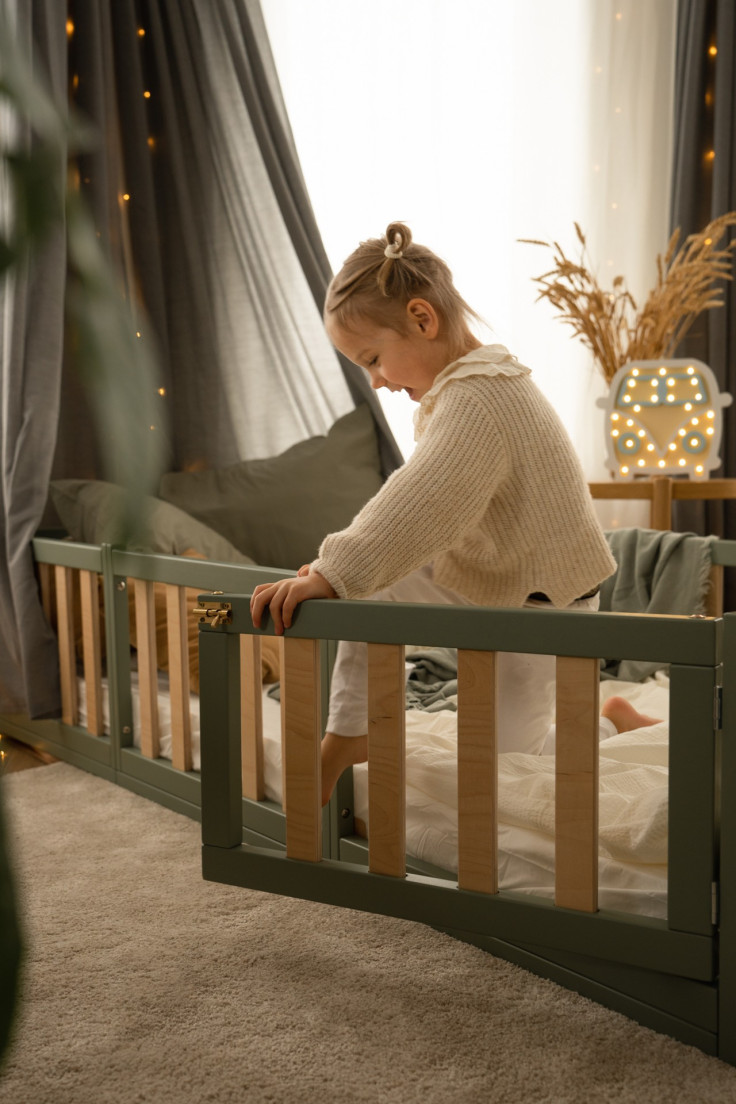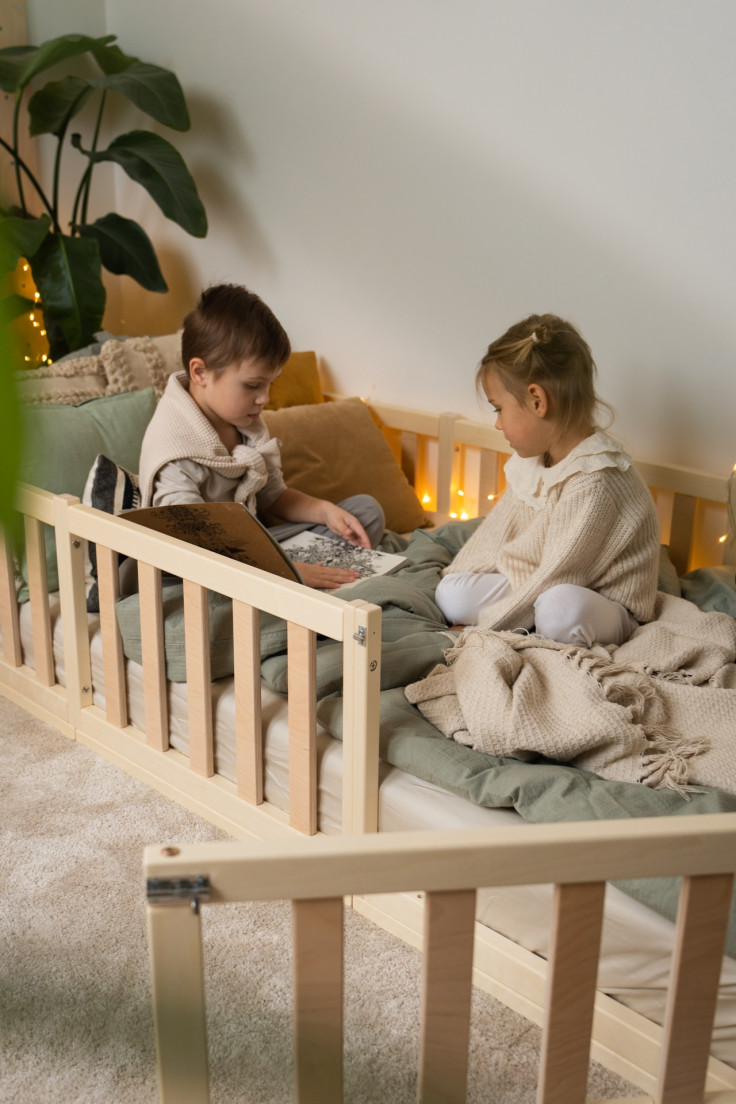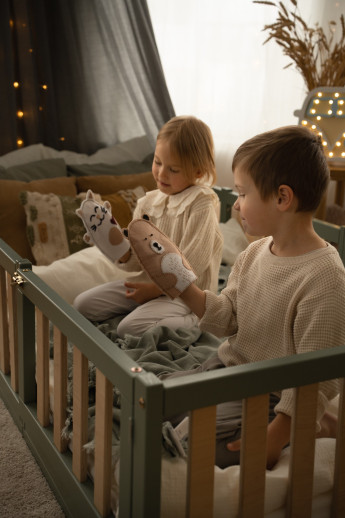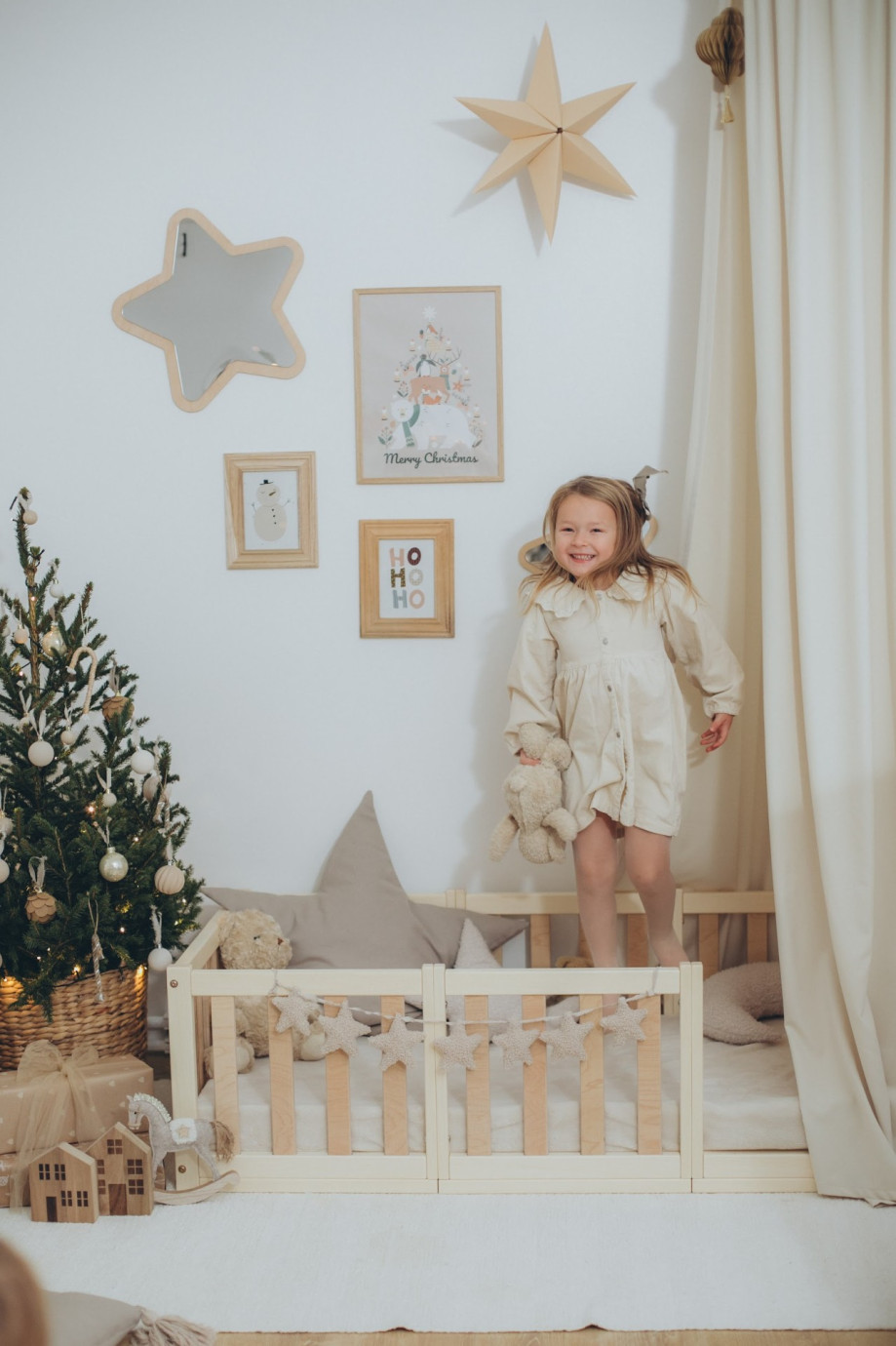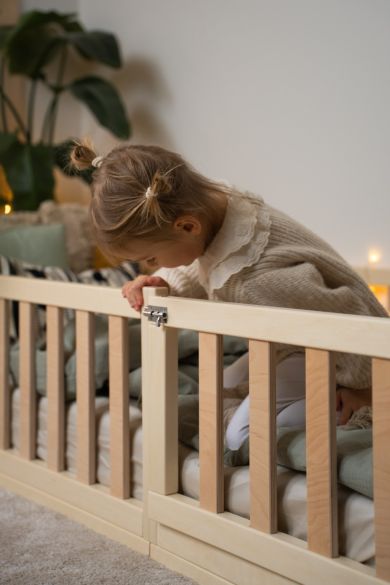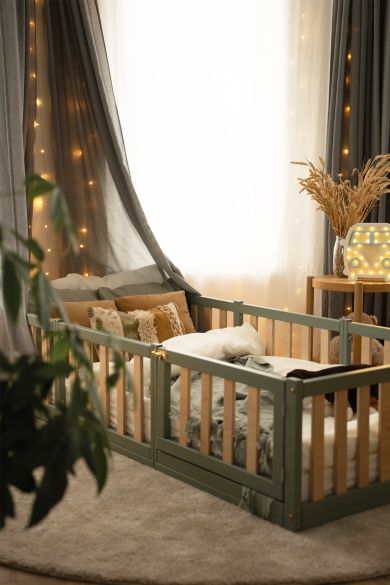Have you ever thought about what could be done better to improve a child’s bedtime experience? The answer is to establish new habits and create a suitable environment.
Before introducing new sleeping habits for your child, it is important to make observing, by noting your child’s behavior and preferences. According to the Montessori method, it is crucial to adapt sleeping habits to suit your child’s temperament, developmental stage, and unique needs. By doing so, you will be able to prepare for a child’s bedtime properly and create an appropriate environment for a successful bedtime routine.
Some advice for the preparation stage
- Note the main processes that should be done before bedtime and assess how much time it usually takes. For example, how much time takes to tidy the room, find pajamas, tooth brushing and wash up.
- Pay attention to the child’s bedtime habits – the importance of having a beloved toy, drinking water before bed, having a switched-on nightlight in the room, or listening to soothing music.
- Observe how the child falls asleep and how much time it usually takes.
- Assess the child’s sleeping quality – does the child sleep disturbingly, wake up often, or cry during sleep?
Note the child’s favorite sleeping positions. - Note what makes him wake up. For example, uncomfortable sleeping position, noises, lost blanket, etc.
Evaluate all these aspects. This will allow you to see the bigger picture. While it may require some extra time and effort, over time bedtime process will become more efficient.
Prepare a pleasant and comfortable environment in the room.
Preparing a suitable environment
Here are some essentials for a child’s bedroom:
- Floor bed or mattress on the floor: Choose a bed that allows the child to step in and out on his own.
- Shelf with a few toys: If there’s space, include a shelf with a selection of toys for the child to play after waking up. But be aware that the shelf should always be well arranged, without unnecessary things, and possibly even hidden to avoid unneeded interest before bedtime.
- Mirror: Place a mirror in the bedroom to help the child get dressed or brush his hair.
- Small wardrobe: Provide a small wardrobe where a child can access his clothes. It is important that a child can dress himself for bedtime without relying on parental assistance. This teaches self-reliance.
- Night light: It can help to create a calming and soothing environment before bedtime and allows the child to feel safe, as darkness may seem frightening to him.
- Safe environment: Ensure the room is completely safe by covering electrical outlets, securing loose wires, and installing window locks. Imagine yourself as a child and observe everything from his height. Is everything safe and free from potential dangers? Can the child easily access necessary items?
- Adjusting the room: It is crucial to arrange the room in a manner that enables the child to accomplish tasks independently. Avoid creating a sense of disability for a child in a bedroom. Observe how the child can prepare himself for bedtime. Disability in this environment can lead to anxiety. Imagine yourself not being able to accomplish something – you would be upset. The same goes for a child. So, it is important to equip the room to support the child’s growing independence.
- Remember – these are some basic considerations. You have the flexibility to personalize the child’s bedroom based on his specific interests and needs.
Establishing new bedtime habits
- Instead of using a lengthy-phrase such as “How many times do I have to tell you to go to bed?” or “Do you want to sleep?” more effective is to provide a gentle warning that bedtime is approaching and use a single word or a simple statement like “bedtime”. This approach helps to avoid unnecessary discussions.
- Maintain a positive bedtime approach, avoiding using sleep as a punishment. Show love, incorporate rituals, and transform bedtime into an engaging experience. Use techniques like “Silent Exercise” to calm a crying child. Start whispering while reading a book, creating a calming effect. The child will stop crying because he will be interested to hear the story.
- Engage in soothing activities like reading, music, massage, or discussion. If nothing of the above helps, have an open conversation to address concerns. For example, ask, “Is there something bothering you? Unfinished task or a desire for another story?”.
Establishing a safe and stable foundation during a child’s bedtime experience is crucial. As a parent, you have the opportunity to provide both physical and emotional safety and stability. This creates a sense of peace for the child, even during challenging times such as sleepless nights. By fostering a secure environment, you can promote better sleep and overall well-being for your child.
Before introducing new sleeping habits for your child, it is important to make observing, by noting your child’s behavior and preferences. According to the Montessori method, it is crucial to adapt sleeping habits to suit your child’s temperament, developmental stage, and unique needs. By doing so, you will be able to prepare for a child’s bedtime properly and create an appropriate environment for a successful bedtime routine.

